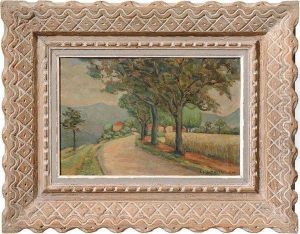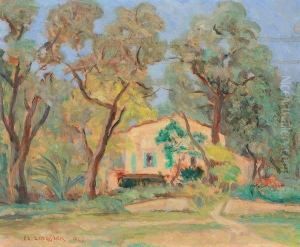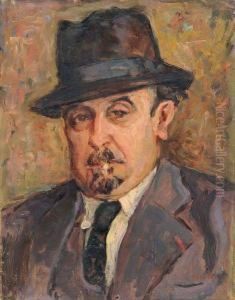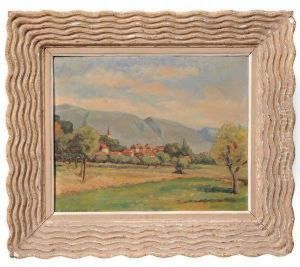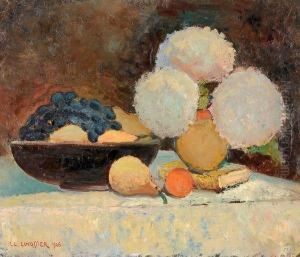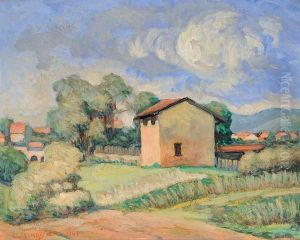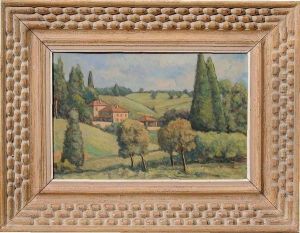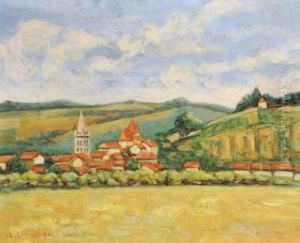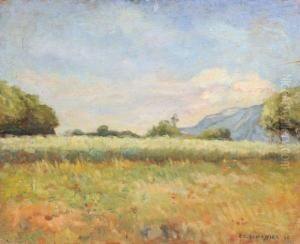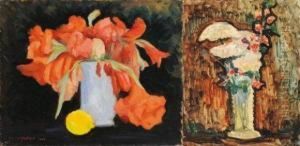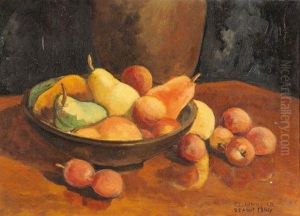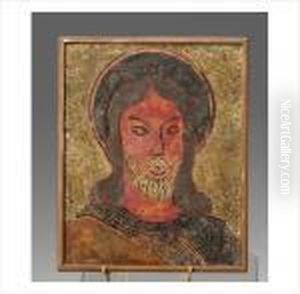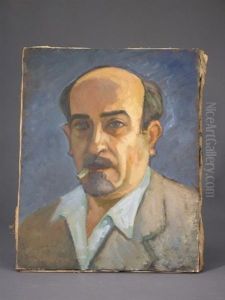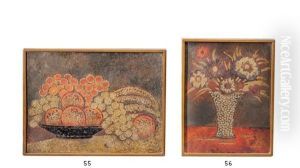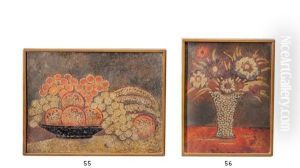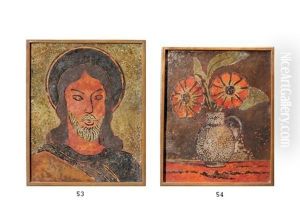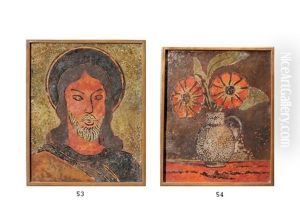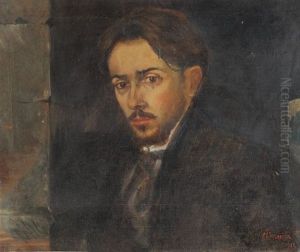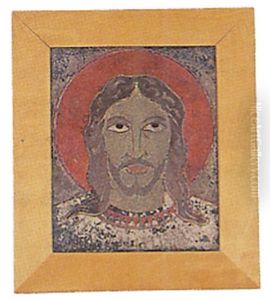Claudius Linossier Paintings
Claudius Linossier was a renowned French metalworker, celebrated for his mastery in the art of dinanderie, a term referring to hammered copperware, traditionally linked with the town of Dinant in Belgium. Born in Lyon, France, Linossier developed an early interest in the arts, leading him to pursue studies at the École des Beaux-Arts in Lyon, where he initially focused on drawing and painting. However, his fascination with metalwork soon redirected his artistic journey.
Linossier's career in metalwork began in earnest after completing his education. He dedicated himself to reviving the ancient techniques of dinanderie, which involved the meticulous hammering and shaping of copper and other metals, followed by the application of rich patinas to achieve stunning visual effects. Unlike many of his contemporaries who embraced industrial methods, Linossier insisted on handcrafting his pieces, believing that the artist's touch was integral to the work's value and beauty.
Throughout the 1920s and 1930s, Linossier's work garnered significant attention and acclaim, both in France and internationally. His creations were characterized by their geometric patterns, stylized motifs, and the harmonious blend of traditional craftsmanship with Art Deco sensibilities. Linossier's mastery of patination techniques, particularly his ability to achieve deep, lustrous tones, set his works apart and made them highly sought after by collectors and museums alike.
Despite the challenges posed by the economic turmoil of the 1930s and the subsequent upheaval of World War II, Linossier continued to produce and innovate within his craft. His dedication to dinanderie not only contributed to the preservation of this traditional art form but also ensured its evolution, as he experimented with new techniques and materials.
Linossier's legacy is preserved through his enduring works, which continue to be celebrated for their artistic and technical excellence. His contributions to the field of metalwork have been recognized in numerous exhibitions and retrospectives, highlighting his role as a pivotal figure in the revival and modernization of dinanderie. Linossier passed away in 1953, leaving behind a body of work that remains influential in the world of decorative arts.

